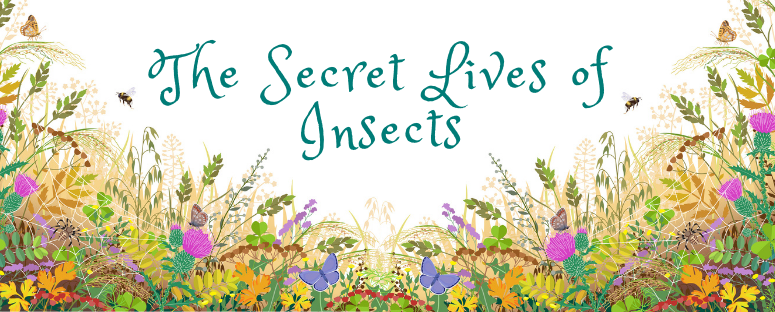
"Arachtober" 10th is International Jumping Spider Day!
By Judy Ferris, Master Naturalist & Guest Blogger
Do you Need a Warm, Fuzzy Hug?
Even folks who fear spiders must admit that this fuzzy-little jumping spider is cute as can be. She comes complete with ‘horns’, 8 eyes, and wears a tres chic fluffy sweater! Add to this her inquisitive engaging personality and she is the perfect ambassador for International Jumping Spider Day!
Though she looks ferocious, this little Canopy Jumping Spider is only 1/2 inch long. Look closely at her face and you will see the vivid green chelicirae (teeth) peeking out from the fur. Glowing, green teeth! Who could resist? Now stare deeply into the spider’s eyes. On a large screen, your eyes begin to play tricks on you as you attempt to stare into all four eyes at once! Like most Jumping Spiders, the Canopy Jumper has 8 eyes arrayed around its head, 4 in front, 2 on the sides of the head, and 2 in the back. Jumpers have some of the best vision of any animal on the planet. Some species can even see in ultra-violet colors! Vision is key, since Jumping Spiders do not create webs to catch insects. Instead, they leap through the air to capture their prey.
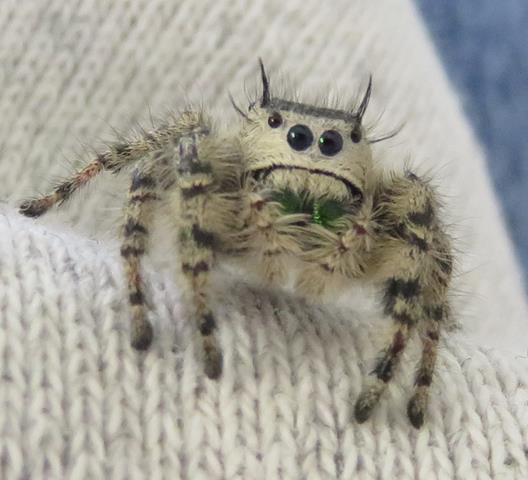
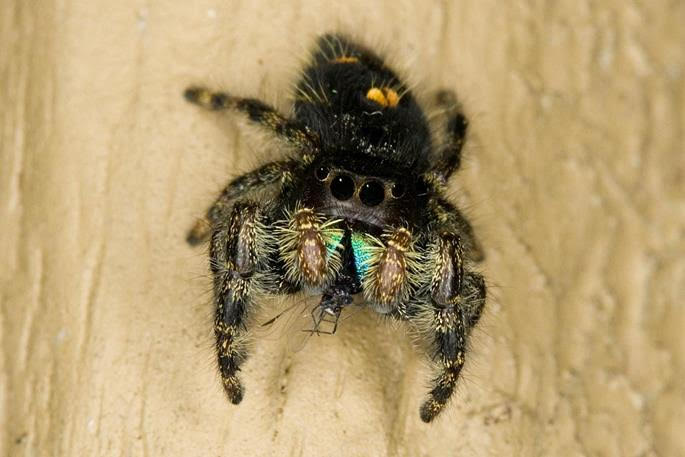
Watch the video below to meet a cousin of the Bold Jumper – the Portia Spider of SE Asia and Australia. Portia Spiders have excellent vision and are intelligent hunters.
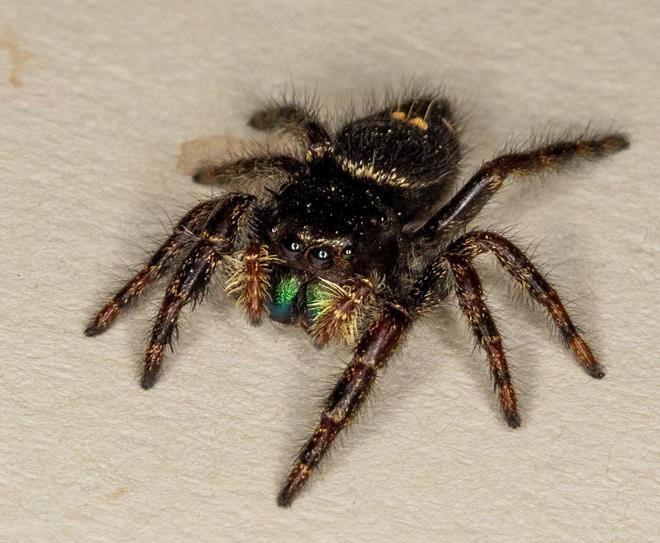
“Portia the Jumping Spider” — 5 minutes. Beautifully filmed by the BBC. Video not playing? Click here: https://www.youtube.com/watch?
You may have noticed that many of Portia’s Jumping Spider cousins here in the United States seem to have an affinity for travel, or more likely, warm snuggly automobiles. They have a flair for appearing unexpectedly in your car as you zoom down the road! The devilish little arachnids revel in zipping across your dashboard, or even your windshield, at critical vehicular moments. Meanwhile, you attempt to focus on driving rather than speculating about the various places a spider could land should it choose to leap. Naturally, once the car is parked the spider vanishes into an inaccessible, dark hidey hole. Hopefully, it has disappeared beneath the dashboard, rather than somewhere in your clothing!
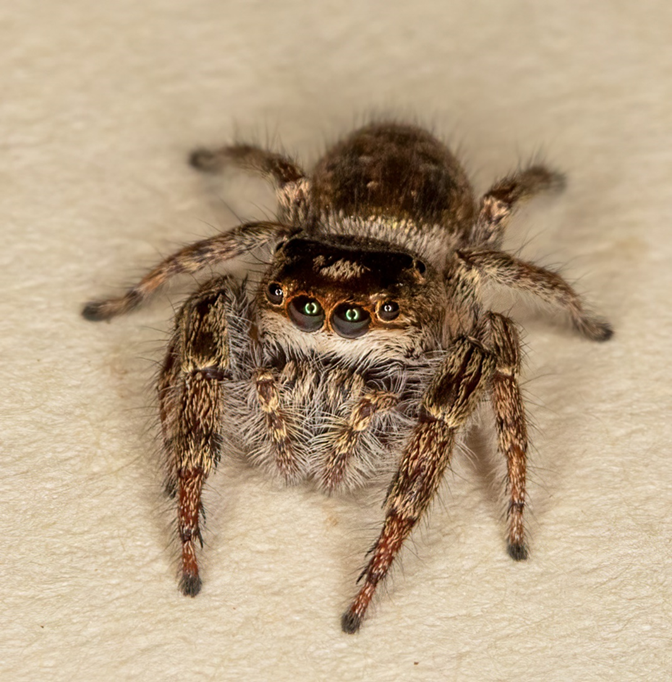
We'd Love To Get Your Feedback!
Could you spare a couple minutes to send us your thoughts about this blog series? We would really appreciate it as it will help us plan for future content! Thanks!